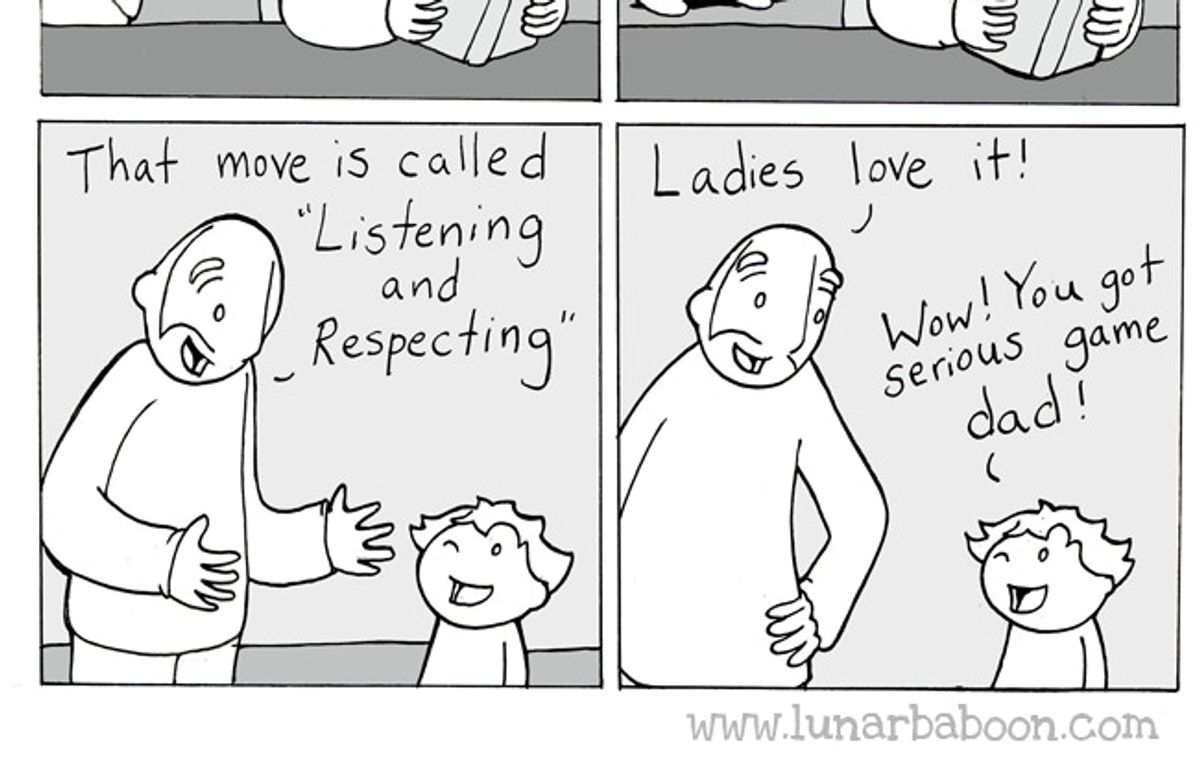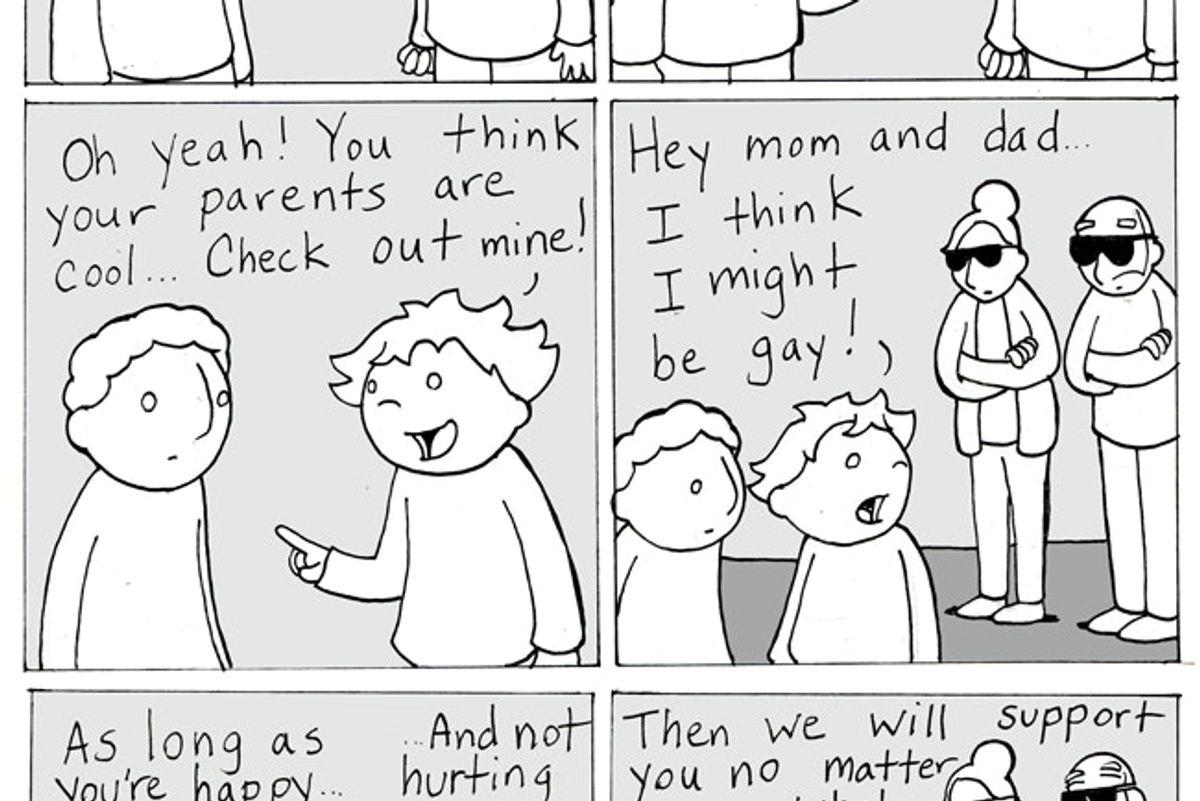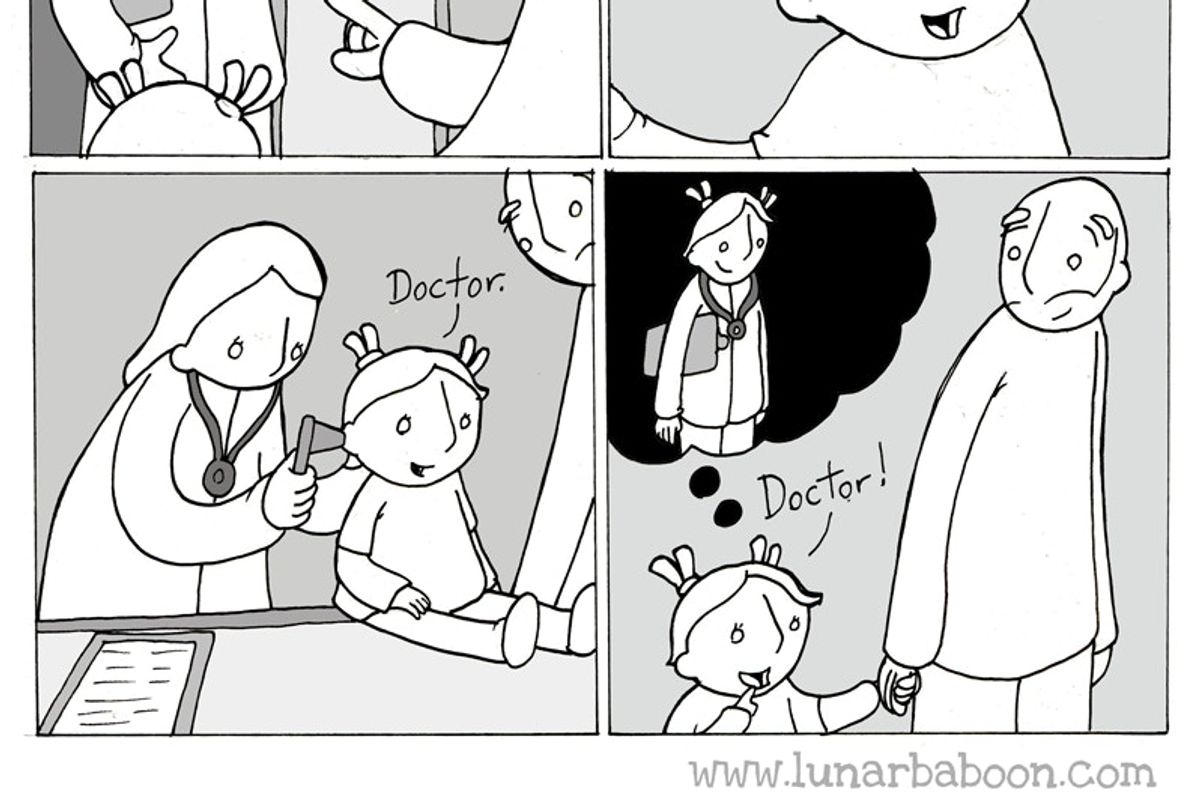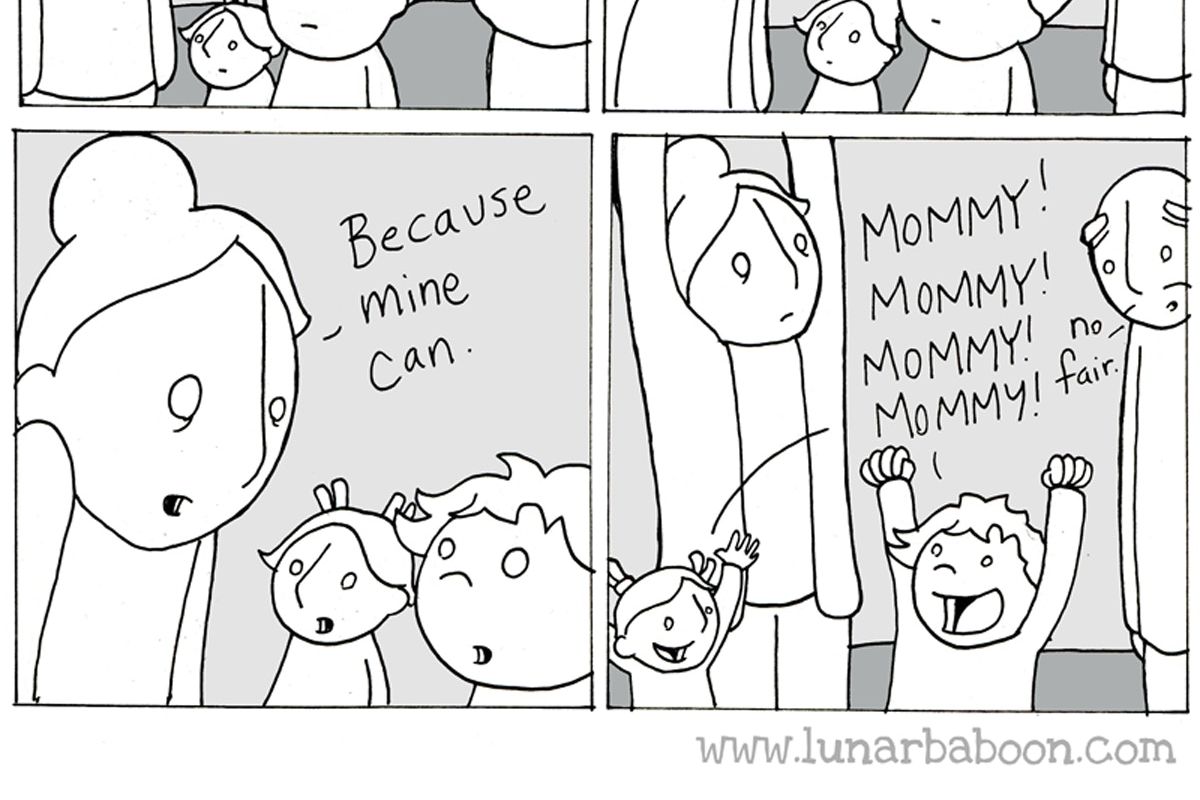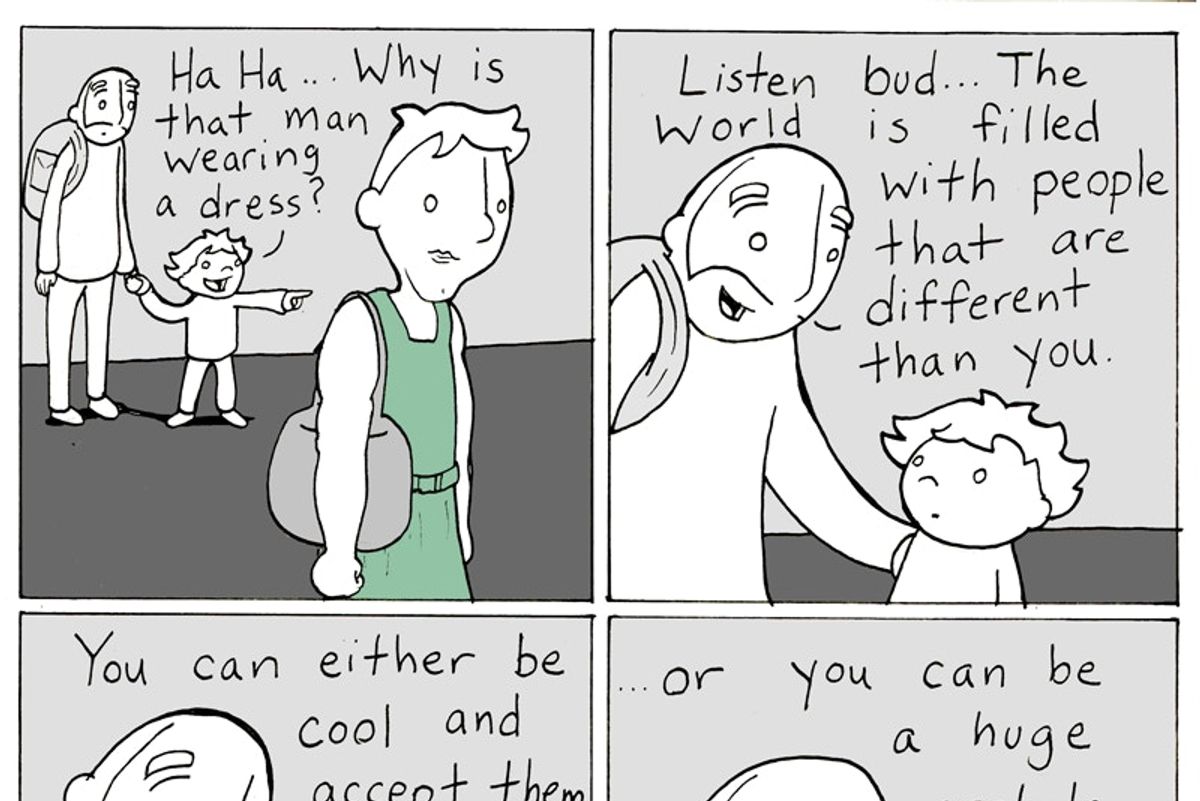This is what it's really like to go to the gym as a fat person.
How the gym exposes a challenging double-bind of attitudes around fatness.
I love the feeling of my beating heart — the rush of blood in my face and limbs, the scrape of heavy breath in my lungs, the pulsing in my fingertips.
I love to feel sweat gather in the fine hairs at my temples, neck. The bright colors of workout clothes and the rhythmic throb of blood in my veins are a celebration of the life in my lungs.
Photo via iStock.
I learned to swim at a young age, joining a swim team in grade school and middle school. I never minded being the fattest kid on the team because swimming made me feel so free and exhilarated. I swam the butterfly, a complicated stroke with a precise momentum, in which my fat body proved a surprising asset. I felt my heartbeat in every inch of my body, and I loved it.
Things changed in high school, when our whole class took fitness tests at the same time, the gym becoming a tiny stage packed with players and too much audience.
In locker rooms, beyond the earshot of adults, classmates would talk endlessly about each other’s personal bests and bodies. Those conversations were a warning shot. I never heard my body discussed, but there was the caution: It would be.
The worst test was running the mile, and the inevitability of harsh judgment that came with it. I dreaded the obviousness of being the fattest kid, the cliché of coming in last. I prided myself on being a high achiever and felt overwhelmed with shame at being seen by all of my peers doing something at which I was so inadequate. After everyone else had finished, I was still there, the last of the last, keeping everyone else from going home for the day. Classmates watched as my reddened face contorted with embarrassment and determination, willing my stubborn body through its final lap.
My brain would overheat and sputter with dread and panic for days leading up to The Mile.
Already an anxious kid, my brain would overheat and sputter with dread and panic for days leading up to The Mile. The night before was often sleepless. Hot, frenzied tears would sear my face while my mother offered comfort. Imagine when it’s over, how free you’ll feel, knowing you don’t have to do it for another six months. Think of how relieved you’ll be. Think of everything else that you love so dearly.
It took me years to rediscover my love of movement and strength.
Today, I walk in the city, run in parks, hike in mountains, and swim on the rare occasion I have access to a private pool. But I don’t go to gyms.
“GOOD FOR YOU!”
I was at the gym on my first day of a trial membership.
I was on the elliptical with my headphones in and my eyes closed, willing the world away. People, problems, noise, and challenge all slipped into the ether, disappearing in a cloud of breath and fast-paced music. Suddenly, a piercing interruption.
“GOOD FOR YOU!”
I opened my eyes to see a stranger standing before me, face to face. She smiled with too much encouragement, the way adults do when children learn a basic skill for the first time. I felt conspicuous, the recipient of too much unwanted and unwelcome attention. I forced a weak smile and nodded, waiting for her to leave.
I looked around. No one else was talking to anyone they didn’t know. One other patron stared at me, his face contorted with unchecked disgust.
Photo via iStock.
Suddenly, I was back in high school, the last huffing, puffing fat kid to finish the mile. The size of my body felt so obvious. It felt piteous because it was pitied, disgusting because it elicited disgust. I walked into the gym feeling fine, even good. I walked out feeling ashamed, small, embarrassed by my own audacity.
Going to the gym as a fat person is a ropes course of social cues — little signals that I’m unwanted or, at best, unexpected.
Like an uninvited party guest who can’t take the hint. Would you like something to drink? We don’t have much left.
The gym exposes a challenging double-bind of attitudes around fatness. Even doing what I’m expected to do — working out — I’m still met with sidelong glances and open gawking, reminders that I’m unwelcome and unwanted. Even in the place I’m supposed to be, I can’t find respite.
As a fat person, I’m constantly bombarded with messages telling me that my job is to spend all of my time and energy changing my body, ever reducing it, until it is the right shape and size, until it moves the right way and says the right thing; until I am confident but not conceited, apologetic but not sad.
This is an impossible standard that rejects nearly all of us. But the gravitational pull of beauty standards is so strong that we are pulled into their orbit.
We all keep trying, keep striving, keep failing. We don’t lose as much weight as we thought, or we don’t lose it in the right places. Our bodies remain stubborn and untamed, unbending to our forceful will.But still, we try. We try new diets, new workouts, new pills. We spend money, time, effort. And every time something doesn’t work, it calls up all of our past defeats. Over time, those failures start to feel like who we are. They ferment, souring into shame.
Photo via iStock.
When any of us goes to the gym, it can call up all of that shame, hurt, and anger at ourselves for our perceived shortcomings. But when I show up, I become an effigy for all of that angst. I suddenly start to feel like a high schooler again at the gym, awkward and ashamed. Because in that environment, so many of us are suddenly awash in insecurity, focused on performing and judging. Even in a gym, the only bodies we can accept are the ones that are already perfect.
When I work out, I don’t do it to fit an impossible and exclusive standard.
I do it to clear my head. I do it to feel vitality, the brightness of knowing just how alive I can be. I do it to take care of a body that takes care of me.
But to go to a gym, I’ve also got to brave a culture that’s borne of insecurity, perfectionism and the lack of it. There’s no room for more, better, improvement. There’s no room for getting stronger, breathing easier, goals other than weight loss. There’s only room for hunger, lack, insecurity and shame.
I’ve had enough insecurity and shame. Instead of chasing a mirage my body will never be, I focus on making it strong. I attend to the many measures of health that shame conquers and flattens. I take long hikes and runs to clear my cluttered mind. I find safe places to swim, to feel the power of my body, the waves it can make. I return to that simple, glorious feeling of my sturdy heart pumping blood brightly through my veins.
Photo via Isaac Brown/Stocky Bodies/Stocky Bodies.
I have known enough shame. Today, I choose abundance and confidence. I choose nuance and self-determination. I choose strength.



